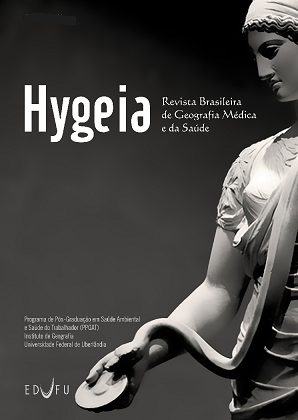OCCURRENCE OF INTESTINAL PARASITES IN PAPER MONEY CIRCULATING IN THE LOCAL TRADE OF THE CITY OF SÃO MATEUS, ESPÍRITO SANTO, BRAZIL
DOI:
https://doi.org/10.14393/Hygeia1126431Palavras-chave:
Intestinal parasites, Transmission, Disease, MoneyResumo
Helminth eggs and protozoan cysts have great resistance to aggressions and environmental factors. In order to verify the involvement of inanimate objects in the transmission mechanisms of parasitic infections, a parasitological study was carried out with paper money circulating in the city of São Mateus, ES, Brazil, among September 2010 and September 2012. Notes were sent to Laboratório de Análises Clínicas of the Universidade Federal do Espírito Santo, distributed in plastic containers containing distilled water, stirred and scraped manually. The material from scraping and rinsing was centrifuged and the pellet fraction was analyzed in a light microscope. From a total of 270 samples analyzed, 22 (8.15%) were positive for eggs or cysts of intestinal parasites and R$ 2.00 bill was the most contaminated. Among the parasite species found Giardia duodenalis was the most frequently, which was observed in 2.22% of the samples, followed by Entamoeba coli and hookworm, both with 1.48%, Ascaris lumbricoides, Taenia sp., E. histolytica/E. dispar and free-living nematode larvae all with 0.74% positivity. From the 30 shops analyzed, 10 (33.33%) had paper money positive for parasitic forms and the greater positive frequency was observed in downtown establishment. Considering the large resistance of eggs/cysts of intestinal parasites to environmental conditions and the importance of paper money as transmitting disease, it is noteworthy the imminent need for investments in studies in São Mateus in order to provide better epidemiology survey for parasitic infections.








